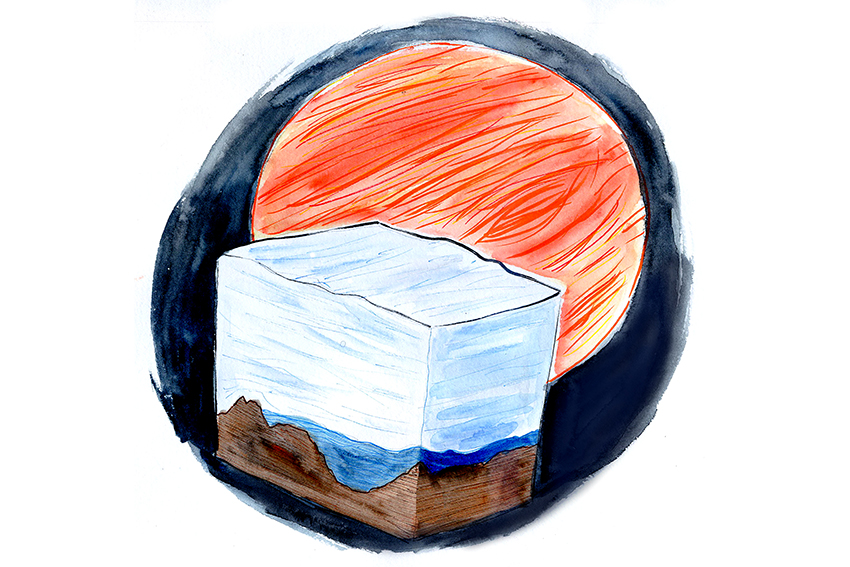The discovery of two very salty lakes underneath an ice cap in the Canadian Arctic may assist scientists in the search for extraterrestrial life, according to a study published this month in Science Advances. Scientists from UT’s Institute for Geophysics (UTIG) uncovered the two lakes using airborne radar data.
Subglacial lakes, previously found in Antarctica and occasionally Greenland, are found beneath ice sheets. Despite being extremely cold and dark, they are often home to microbial life. Their properties make them similar to environments on other planetary bodies and a good model for hosts of potential life beyond Earth. The two subglacial lakes discovered by UTIG researchers are unique: In addition to being the first discovered in the Canadian Arctic, they are the first subglacial lakes thought to be hypersaline, or full of very salty water.
This extreme saltiness is significant because previous research showed that Europa, one of Jupiter’s moons, contains hypersaline lakes much like the ones discovered. If microbes are present, studying them will allow researchers to determine how they may have evolved independently in the lakes’ cold, isolated environments.
“We think that, in places like (Europa), there are water bodies that are very salty,” said Jamin Greenbaum, geophysics postdoctoral fellow and co-author of the study. “We think that these lakes in Canada could be direct analogs, or very similar, to what we expect to find on Europa.”
Findings from that research can better equip NASA on its Europa Clipper mission, which is set to launch in the 2020s to investigate Europa’s physical features.
Researchers used radar data from both UTIG and NASA to locate the lakes, which are thought to be between 550 and 770 meters beneath the Devon Ice Cap. Researchers from UTIG, Stanford University, University of Cambridge, University of Alberta and Montana State University also worked on the study. Planes holding a half ton of scientific equipment were flown over the Canadian Arctic and other icy parts of the planet to collect data for the primary purpose of determining the geology beneath the ice, Greenbaum said.
Models indicated that the lake’ temperatures are several degrees below freezing at their warmest, meaning that high amounts of salt likely depressed the water’s freezing point since salt water has a lower freezing point. Geological mapping of surrounding structures gave supporting evidence for the lakes’ hypersalinity.
Now that researchers are fairly sure that these subglacial lakes are hypersaline, the next step is to take detailed survey data of the area and prepare for drilling into the lakes, said Greenbaum. Doing so will allow them to determine if and how life can exist there and, by proxy, possibly on Europa.
“The idea is to drill into it, verify it’s a habitat and then understand how habitants can exist in this type of environment,” Greenbaum said. “That’s the most exciting thing about this whole project.”















